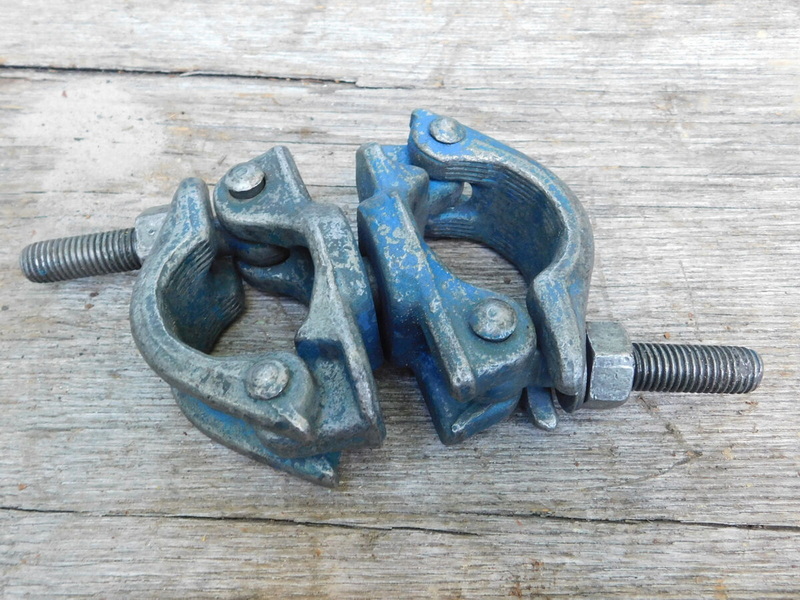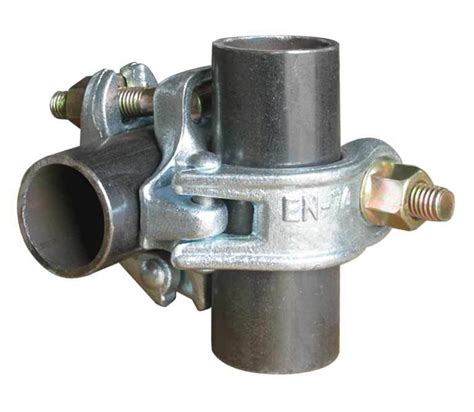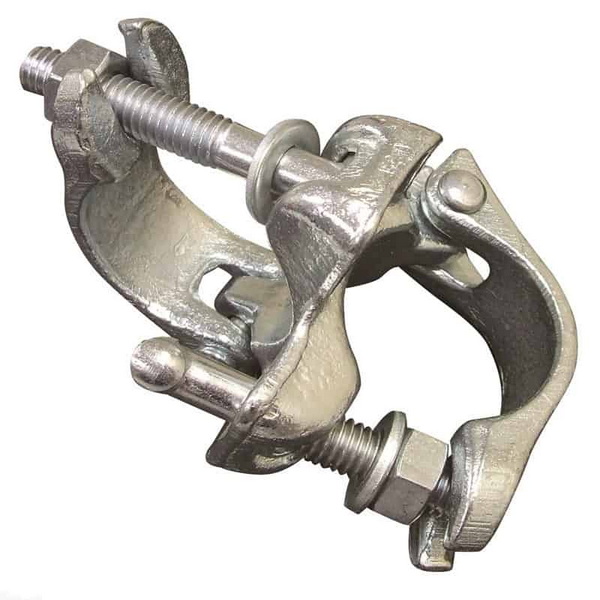Content Menu
● Introduction to Right Angle Couplers
● Types of Right Angle Couplers
● Applications of Right Angle Couplers
● Proper Use of Right Angle Couplers
● Safety Considerations
● Advanced Techniques for Right Angle Coupler Installation
● Case Study: Successful Use of Right Angle Couplers
● Innovations in Right Angle Couplers
● Conclusion
● FAQ
>> 1. What is the primary function of a right angle coupler in scaffolding?
>> 2. What are the main types of right angle couplers used in scaffolding?
>> 3. How do you properly install a right angle coupler?
>> 4. What safety considerations should be taken when using right angle couplers?
>> 5. What materials are right angle couplers typically made of?
● Citations:
Scaffolding is a crucial component in construction projects, providing a safe and stable platform for workers to perform their tasks efficiently. Among the various components used in scaffolding, right angle couplers play a pivotal role in connecting scaffolding tubes at right angles, ensuring the structure remains firm and can support weight. In this article, we will delve into the proper use of right angle couplers in scaffolding, exploring their types, applications, and safety considerations.

Introduction to Right Angle Couplers
Right angle couplers, also known as 90-degree couplers, are designed to connect scaffolding tubes at a right angle, creating strong and sturdy joints. These couplers are essential in scaffolding setups where tubes meet perpendicularly, ensuring the structure's stability and ability to support weight.
Types of Right Angle Couplers
There are several types of right angle couplers used in scaffolding, including:
1. Fixed Right Angle Couplers: These are the most common type and are used to connect tubes at a fixed 90-degree angle. They are widely used in construction sites for creating stable scaffolding structures.
2. Swivel Right Angle Couplers: These couplers allow for some degree of rotation, providing flexibility in scaffolding setups. They are useful for creating complex configurations where the angle between tubes may vary.
3. Right Angle Double Couplers: These couplers consist of two pairs of single couplers and are used to connect two scaffold pipes at a right angle. They provide double the load-bearing capacity of a single coupler and are commonly used in construction sites, maintenance, and emergency rescue operations.
Applications of Right Angle Couplers
Right angle couplers are versatile and have numerous applications across various industries:
- Construction Sites: They provide a stable platform for construction workers, enabling tasks such as painting, plastering, and bricklaying.
- Building Maintenance and Renovation: These couplers support scaffolds that allow access to different sections of buildings, ensuring safe and efficient maintenance and renovation tasks.
- Industrial and Petrochemical Plants: They support scaffolding structures during installation, repairs, and inspections of large machinery and piping systems, providing a safe working environment in hazardous areas.
- Event and Entertainment Industry: Scaffolding with right angle couplers is often used in setting up stages, lighting rigs, and seating areas for concerts and festivals.
Proper Use of Right Angle Couplers
To ensure the safe and effective use of right angle couplers, follow these guidelines:
1. Inspection: Always inspect the couplers for any signs of damage or wear before use. Ensure they are free from rust and corrosion.
2. Installation: Use the correct tools, such as a scaffold spanner, to tighten the couplers securely. Ensure that all nuts and bolts are tightened in a clockwise direction.
3. Load Capacity: Never exceed the recommended load capacity of the couplers. Overloading can lead to structural failure and accidents.
4. Regular Maintenance: Regularly check and maintain the couplers to ensure they remain in good condition.
5. Training: Ensure that all personnel using scaffolding are properly trained on the safe assembly and disassembly of scaffolding structures.

Safety Considerations
Safety is paramount when using right angle couplers in scaffolding. Here are some key considerations:
- Training: Ensure that all personnel using scaffolding are properly trained on the safe assembly and disassembly of scaffolding structures.
- Safety Equipment: Always use appropriate safety equipment, such as harnesses and hard hats, when working on scaffolding.
- Regular Inspections: Conduct regular inspections of the scaffolding structure to identify any potential hazards or defects.
- Weather Conditions: Be aware of weather conditions that could affect scaffolding stability, such as strong winds or heavy rain.
Advanced Techniques for Right Angle Coupler Installation
For more complex scaffolding setups, advanced techniques may be required:
1. Multi-Level Scaffolding: When building multi-level scaffolding, ensure that each level is securely connected using right angle couplers to maintain structural integrity.
2. Curved Scaffolding: For curved or circular scaffolding, swivel right angle couplers can be used to create smooth, continuous curves.
3. Scaffolding on Uneven Ground: When setting up scaffolding on uneven ground, use adjustable bases and right angle couplers to ensure the structure remains level and stable.
Case Study: Successful Use of Right Angle Couplers
A recent construction project in a major city utilized right angle couplers extensively to build a complex scaffolding structure around a historic building. The use of these couplers allowed for a stable and flexible scaffolding setup, enabling workers to safely perform restoration tasks while preserving the building's architectural integrity.
Innovations in Right Angle Couplers
Recent innovations in right angle couplers include:
1. Material Advancements: New materials like advanced alloys and composites are being used to make couplers lighter, stronger, and more resistant to corrosion.
2. Smart Couplers: Some companies are developing smart couplers with integrated sensors that monitor load capacity and structural integrity in real-time, enhancing safety and efficiency.
3. Sustainable Practices: There is a growing focus on sustainable practices in scaffolding, including the use of recycled materials and energy-efficient manufacturing processes for right angle couplers.
Conclusion
Right angle couplers are indispensable in scaffolding, providing a stable and secure connection between tubes. Understanding their types, applications, and proper use is crucial for ensuring safety and efficiency in construction projects. By following the guidelines outlined in this article, you can maximize the benefits of right angle couplers while minimizing risks.

FAQ
1. What is the primary function of a right angle coupler in scaffolding?
The primary function of a right angle coupler is to connect scaffolding tubes at a 90-degree angle, creating a stable and sturdy structure that can support weight.
2. What are the main types of right angle couplers used in scaffolding?
The main types include fixed right angle couplers, swivel right angle couplers, and right angle double couplers.
3. How do you properly install a right angle coupler?
Proper installation involves using the correct tools to tighten the couplers securely and ensuring all nuts and bolts are tightened in a clockwise direction.
4. What safety considerations should be taken when using right angle couplers?
Safety considerations include ensuring proper training, using safety equipment, and conducting regular inspections of the scaffolding structure.
5. What materials are right angle couplers typically made of?
Right angle couplers are typically made from high-strength materials such as steel or aluminum, which provide durability and resistance to corrosion.
Citations:
[1] https://www.tsl-scaffolding.com/key-features-and-functions-of-scaffold-right-angle-couplers.html
[2] https://www.youtube.com/watch?v=Guyq0-X2DaY
[3] https://www.alibaba.com/showroom/scaffold-right-angle-double-coupler.html
[4] https://apacsafety.com/the-ultimate-guide-of-scaffolding-couplers/
[5] https://stage-shop.com/aluminium-doughty-90-degree-fixed-coupler
[6] https://patents.google.com/patent/WO2003091512A1/zh
[7] https://www.altradgeneration.com/assets/files/guides_and_documents/scaffolding/scaffold-coupler-manual.pdf
[8] https://www.youtube.com/watch?v=0uNeC4oR_Fk
[9] https://www.youtube.com/watch?v=a5VG7k_boDs






















